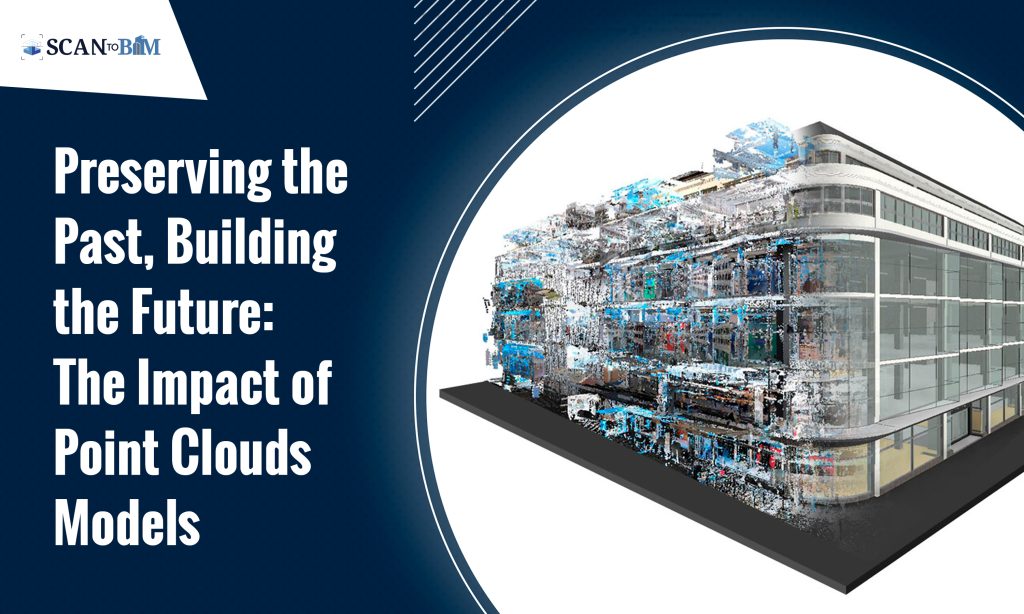
Introduction:
The ever-growing global population and the need for sustainable living have led to a surge in innovative approaches to housing. One such method gaining popularity is the transformation of existing structures into residences. This method not only tackles the housing shortage but also plays a role in contributing to the adaptive reuse of buildings, reducing the environmental impact of new constructions. One of the critical technologies leading to this transformation is Point cloud modeling.
Point Cloud Models: A Brief Overview:
Point cloud modeling is a cutting-edge technology that captures and represents the geometry of physical spaces in a three-dimensional digital format. It involves the use of LiDAR (Light Detection and Ranging) scanners or photogrammetry techniques to collect vast amounts of data points, creating a highly detailed and accurate representation of a structure. These point clouds serve as a foundation for various applications, including architectural design, construction planning, and the transformation of existing structures into residences using apt Scan to BIM Services.
How Point Cloud Models Facilitate Transformation:
1) Accurate Documentation:
Before any transformation can take place, it is crucial to have accurate and detailed documentation of the existing structure. Traditional methods such as manual measurements or 2D drawings may be prone to errors and lack the level of detail needed for complex transformations. Point cloud models, on the other hand, provide a comprehensive and precise representation of the structure, capturing even the subtlest details.
2) Virtual Reality for Design Visualization:
Point cloud models can be integrated into virtual reality (VR) environments, allowing architects and designers to explore and visualize potential transformations in an immersive 3D space. This not only elevates the design process but also enables stakeholders to make informed decisions about the layout, aesthetics, and functionality of the future residence.
3) Adaptive Design and Planning:
Existing structures often come with unique challenges, such as irregular shapes, outdated systems, or structural issues. Point cloud models empower architects to create adaptive design solutions that optimize the use of available space while preserving the structural integrity of the building. This level of precision in design and planning is crucial for the successful transformation of existing structures into functional residences.
4) Clash Detection and Structural Analysis:
One of the key benefits of point cloud models is the ability to conduct clash detection and structural analysis before the transformation process begins. By overlaying the proposed design onto the point cloud model, architects can identify potential conflicts or structural issues that may arise during construction. This pre-emptive approach minimizes the risk of costly mistakes and ensures a smoother transformation process.
5) Efficient Renovation and Construction:
Point cloud models streamline the renovation and construction process by providing accurate measurements and reference points for every aspect of the project. This minimizes the requirement for on-site modifications and enhances the efficiency of construction teams. Additionally, the digital nature of point cloud models allows for easy collaboration among architects, engineers, and contractors, fostering a cohesive and integrated approach to the transformation.
Benefits of Point Clouds in Transforming Old Buildings:
1) Preservation of Architectural Heritage: Point cloud models play an importants role in the preservation of historical and architecturally significant buildings. When transforming old structures into residences, it’s essential to retain the unique features that contribute to the building’s historical value. Point Cloud to BIM Services accurately capture intricate details, allowing architects to preserve and integrate these elements into the new design, ensuring a harmonious blend of the old and the new.
2) Minimization of Errors and Rework: Traditional methods of measuring and documenting existing structures are prone to errors, leading to costly rework during the renovation process. Point cloud models significantly reduce the likelihood of inaccuracies, providing a precise and comprehensive digital representation. This accuracy minimizes errors in design and construction, saving both time and resources during the transformation of old buildings into residences.
3) Cost-Efficient Design Process: The detailed information provided by point cloud models streamlines the design process, enabling architects to make informed decisions early on. This efficiency translates into cost savings as it reduces the need for extensive revisions and modifications during the construction phase. The ability to visualize and analyse the existing structure in detail allows for a more cost-efficient design and planning process.
4) Optimized Space Utilization: Old buildings often come with unique layouts and spatial configurations that may not align with modern residential needs. Point cloud models empower architects to optimize space utilization by understanding the existing structure’s spatial constraints and possibilities. This results in well-designed living spaces that make the most of available square footage, enhancing the overall functionality of the transformed residences.
5) Environmental Sustainability: Adaptive reuse of existing structures is inherently more sustainable than demolishing and constructing new buildings. Point cloud models contribute to environmental sustainability by facilitating the transformation of old buildings into residences without the need for extensive new materials. This approach reduces the carbon footprint associated with new construction and promotes an eco-friendlier solution to the growing demand for housing.
6) Adaptability to Varied Architectural Styles: Old buildings may showcase a variety of architectural styles that require a nuanced approach during transformation. Point cloud models provide architects with the flexibility to adapt to diverse architectural features, ensuring that the transformed residences honour and enhance the unique character of each building. This adaptability is beneficial while dealing with structures from different historical periods and architectural movements.
Conclusion:
The utilization of point cloud models in transforming existing structures into residences marks a significant advancement in the field of architecture and construction. This technology not only elevates the accuracy and efficiency of the transformation process but also promotes sustainable practices by repurposing existing buildings. As the demand for housing continues to rise, point cloud modelling emerges as a key tool in reshaping our urban landscape and creating innovative, liveable spaces within the confines of existing structures.